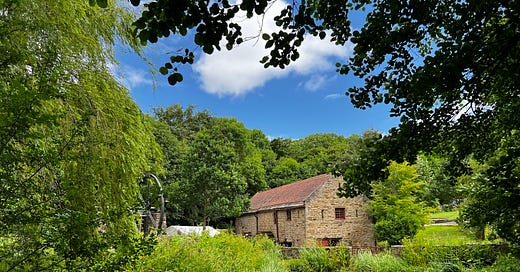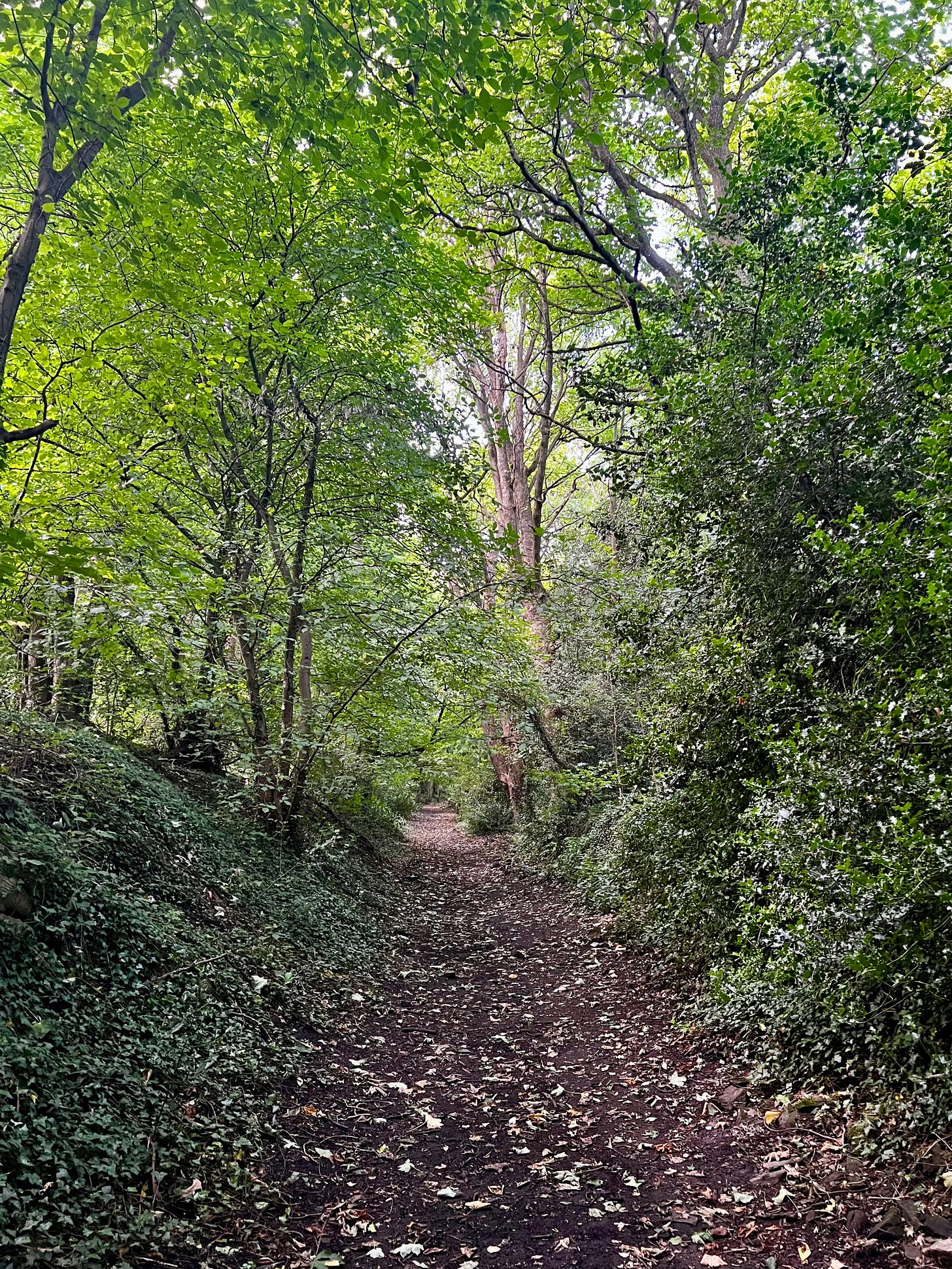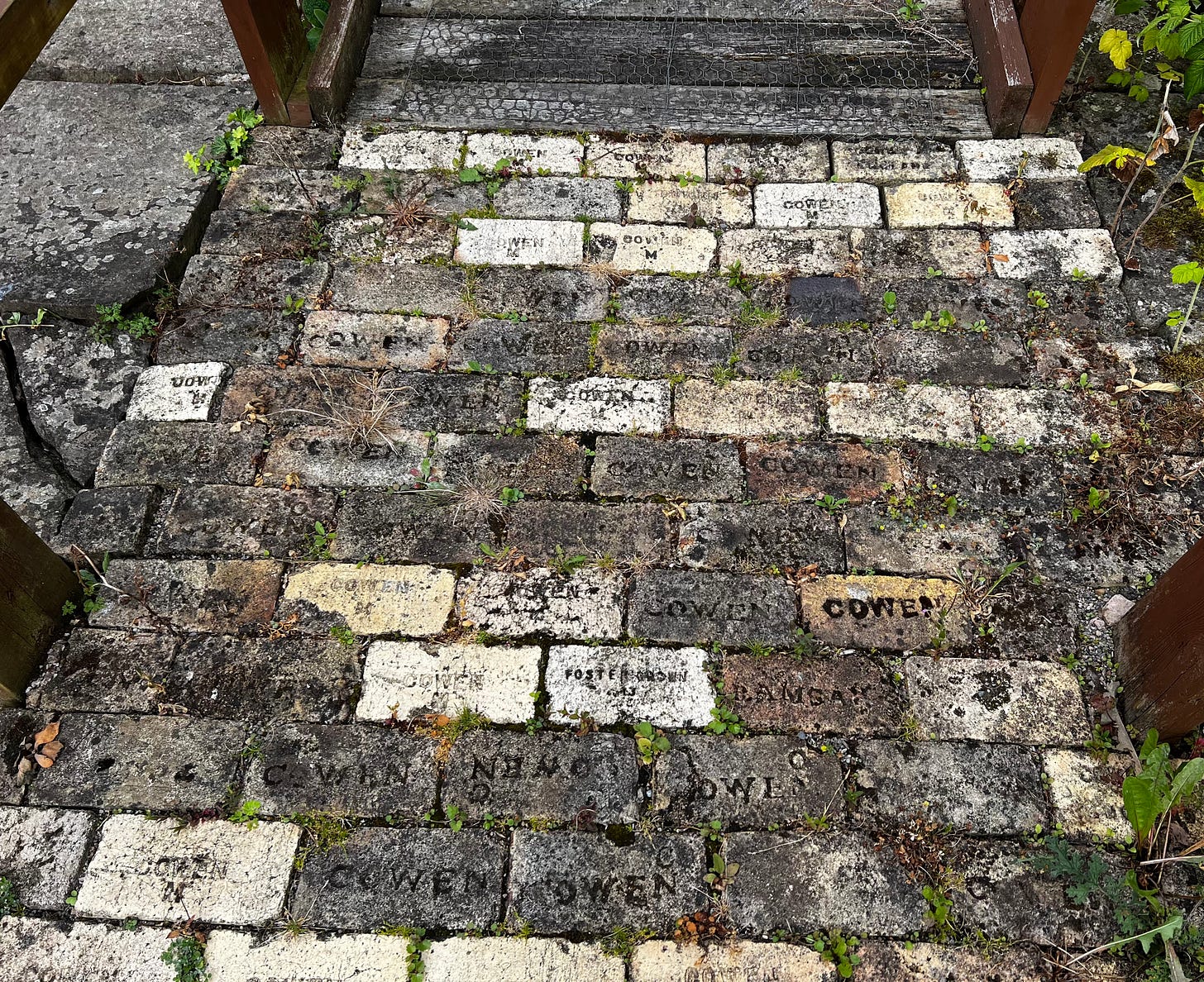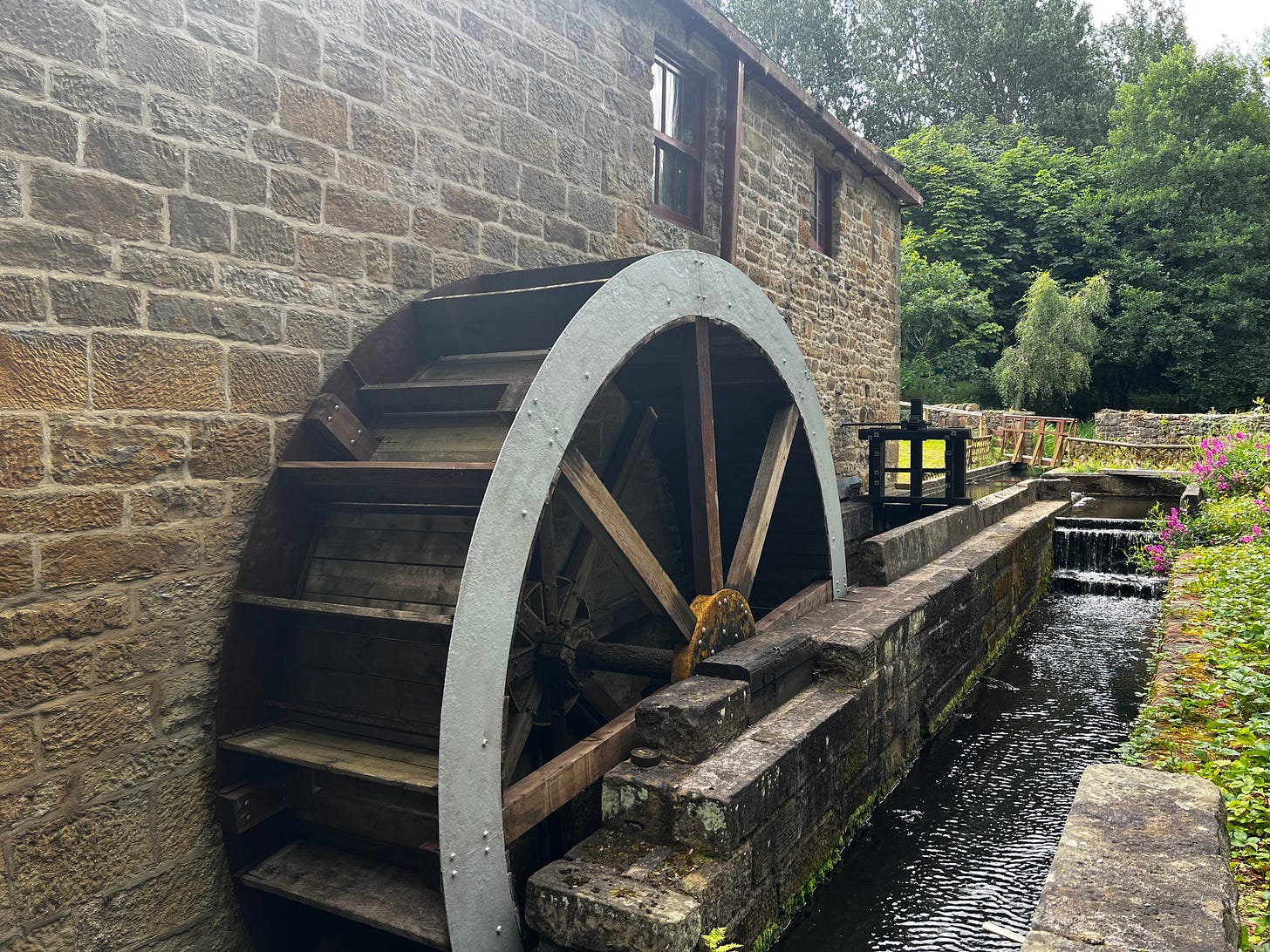“as they would inevitably be killed were the convoy to break (which frequently happens) or any other accident occasion their waggons to run amain; nor is this fatal consequence attendant only on the horses, but the drivers often receive broken bones, bruises and frequently the most excruciating deaths.”
The General Magazine reporting on the practice of the northeast England coal waggon men to unhitch the horse at the head of a downhill slope and put it behind.
About a mile from my home, there once stood, before the coming of the Industrial Revolution, the most industrialised pocket of land in England. At the end of the 17th Century, coal and lead mining in the north of England began to expand rapidly, and the most efficient way to transfer it was by water. It led to the building of staithes (wharves) along the banks of the River Tyne for the loading of coal and lead onto keel boats that were then rowed, in the case of coal to seagoing colliers bound for London, whose residents happily paid high prices for Tyneside coal. Getting the coal and lead to the staithes meant using hundreds of horses and ponies to pull their loads along waggon ways. And those horses and ponies needed feeding on the journey, which drove the need for mills to produce such feed. Some waggon ways were mere tracks, but some had rails. Wooden to begin with and later iron - the ‘rail-way’ did not start with the steam engine.
By the eighteenth Century, at least eight operating water mills stood in a one-mile section along Blaydon Burn, a small stream down to the River Tyne that ran parallel to the waggon ways. Also, there were over thirty mine workings and 'Crowley's Ironmongery Works' in the locality. At the time, the ironmongery works were Britain's, and possibly Europe's, most extensive single integrated industrial production facility and a significant precursor to the Industrial Revolution. The coal that powered the works came from one of the nearby coal mines, and the technical innovations from the works indirectly led to the foundation of the world-famous Sheffield Steel. Later came the building of 'Cowen's Fire Brick Works', widely regarded as producing the best fire bricks in the world. At its peak, it was producing six million fire bricks a year. Then, in the very early 20th Century came the building of a massive Coke Works comprising eighty ovens made by the German company of Otto Hilgenstock. Very quickly, the area became known to everyone as Ottovale. To use the waste heat from the coke works saw the building of an electricity plant known as Blaydon Power Station with state-of-the-art, world-leading turbine technology installed to supply power to the local community. The gas from the coke works also held other by-products. In 1911, these were the first works in the world to produce petrol from coal – known initially as Blaydon Benzol and later National Benzol.
As I described last year in A Walk in the Woods, the tranquillity of nature has now reclaimed that earlier industrial landscape with its noisy hustle and bustle. However, a piece of that early industry still stands amidst this natural reclamation. A beautifully preserved watermill, one of the original eight mills, now sits in a peaceful dell next to wooded walks, picnic facilities, and a garden area. The path through the woods I took to reach the mill was once the 'Townley Main' waggon way, one of the railed waggon ways I mentioned earlier. The route of the waggon way is still evident, although all evidence of the rails has disappeared.
The Path Head Mill began working in about 1730 when a poultry and pig farmer decided to 'diversify'. At that time, Path Head was a picturesque rural community of some thirty thatched cottages through which the waggon way ran. As an aside, the route of the waggon way is ancient, dating back to the Bronze Age, with the discovery, in the 1930s, of Bronze Age cists holding human remains and artefacts. However, just as all signs of the industry in the area have disappeared, so have the Path Head cottages. The mill is the only evidence of that once-small farming community.
In the Blaydon area, the lead brought down the waggon ways was bound for the Blaydon refinery. Every ton of lead ore produced nine or ten ounces of silver, and from at least the 1720s, that refinery extracted that silver and then produced litharge – used in the paint and glass industries. The coal was bound for the staithes at Stella, a small community a mile west of Blaydon, whose ancient name, stelling-ley, described meadowland near a river full of fish. Stella is famous in the area for a historic building and a battle. Built in Elizabethan times by the Tempest family, the building was Stella Hall. The Tempests could trace their ancestry back to the 12th Century and, by the 17th Century, owned much land in the northeast and, along with agriculture, were pioneers in coal mining. They were also famous recusants who remained loyal to the Catholic Church and refused to attend Church of England services after Henry VIII's English Reformation—a brave act in those times.
In August 1640, the Tempests hosted Charles I at Stella Hall, the English army's headquarters at the Battle of Newburn, where they fought against the Scottish Covenanter army. A 17th-century Scottish religious and political movement that supported a Presbyterian Church of Scotland and had signed the 'National Covenant', pledging to resist religious changes imposed by Charles' bishops on the Scottish Church, who became largely Puritan in the years following Henry VIII's split with the Pope. This battle at Newburn, part of what became known as the 'Bishop's War', was a significant event leading up to the First English Civil War.
Charles I's forces lost to the Scots, who crossed the River Tyne and forced Newcastle's surrender two days later, staying in the city for a year, causing issues locally (raiding homes for food, etc.) and nationally. Newcastle was the country's largest coal supplier, so the Scots held England to ransom by occupying the city. King Charles I needed money to shift the Scots because he no longer had Newcastle's coal tax revenues. However, Parliament not only refused the King such money, but they also voted unanimously for greater control of him, which would lead, in turn, to the First English Civil War in 1642. This war, a pivotal moment in English history, marked the beginning of a series of battles that would ultimately lead to the execution of Charles I and the establishment of a Republican Commonwealth.
By 1650, it was the head of that Republic, Oliver Cromwell's turn to stay in the hall with the Tempests. Given Cromwell’s almost pathological hatred of Catholicism and Royalists, we can only imagine the after-dinner conversations. Cromwell's stay at Stella Hall was in preparation for his battle at Dunbar with the Scottish army of Charles II, proclaimed by the Scots as King of Britain following the execution of his father, Charles I.
Despite being heavily outnumbered, Cromwell's surprise attack carried the day. The two-hour battle reportedly saw up to three thousand Scots killed and up to ten thousand taken prisoner. Reports are that Cromwell's English losses were just twenty deaths and sixty wounded. After Cromwell's army saw further victories elsewhere in Scotland, Charles' supporters eventually smuggled him out of Britain. Ten years later, it would take Cromwell's death before Charles returned to England as King.
By the 1800s, the Cowen family of firebrick fame, mentioned earlier, occupied Stella Hall. Joseph Cowen, born at Stella Hall in 1829, became a Knight and parliamentarian interested in European revolutionary movements. He entertained the Italian patriot, politician, and general Giuseppe Garibaldi at Stella Hall; Garibaldi captured Cowen’s appreciation so much that he commissioned a Garibaldi statue to include in a 'Folly'. The Folly now stands alone on a windswept hill while the somewhat weather-beaten head of Garibaldi's statue occupies pride of place in Blaydon's public library.
Sadly, in the 1950s, Stela Hall, despite witnessing so much history, was demolished, so let's return to the Path Head Mill. It may not be as grand as Stella Hall, but it still played a crucial role in the local economy by producing horse feed.
By 1830, the lead mines were exhausted, and because of the Napoleonic Wars, corn prices were too high for a small mill to produce it cost-effectively. So, when the railway arrived at Blaydon a few years later and transformed the transportation of industrial products, the mill began its decline. The Path Head Watermill was still working in 1895, but by 1930, it had fallen into disuse. The mill wheel had gone, and by the 1960s, all that remained were some dilapidated buildings, with the mill building converted into a weathertight barn to store crops. However, by the 1970s, it was derelict. Then, in the mid-1990s, a Trust, with help from Gateshead Council, Local Heritage Initiative Funds, and the unwavering support of the local community, began to restore the mill and surrounding area to their former glory. Using a wheel and necessary spare parts sourced from other ruined mills, the Path Head mill slowly but surely came back to life. It took a lot of dedication from volunteers, many of whom came from disadvantaged backgrounds. It now functions fully but is set up for joinery and woodturning rather than flour milling.
I mentioned earlier that Stella derived from “meadowland near a river full of fish.” So, you might say the area has come full circle. Five hundred years ago, that would have been an apt description. Then came the Industrial Revolution, which turned that peaceful place into a tumult of noise, dirt, and pollution. It’s taken nature only some fifty years to reclaim what was always hers.








I love industrial history. It’s amazing how nature recovers areas that were once highly polluted and built upon.
Harry you're an absolute mine of information & this was a fascinating read, thank you 🤓